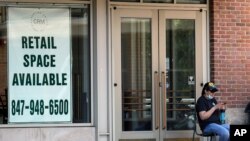Americans opened their wallets in May, with a record surge in retail spending as U.S. businesses began to reopen after largely being shut down for weeks by the coronavirus pandemic.
Sales jumped 17.7% over April, the most in data going back to 1992, the Commerce Department reported Tuesday. The figure was twice what economists had forecast.
Even with the improvement, however, the drag on the economy wrought by the coronavirus left retail sales down 6.1% from a year ago.
All retail sales categories advanced in May, with a 44% increase in car and truck sales and a 29% increase in restaurant receipts as Americans looked to escape from their homebound coronavirus quarantines and go out to eat, or at least drive by for curb-side food pick-ups. Clothing and furniture sales also jumped.
The retail spending was boosted by $1,200 stipends the U.S. government sent in April and May to many Americans to ease the economic pain of the coronavirus shutdowns and by the ongoing $600-a-week extra unemployment cash benefits being sent to the more than 40 million workers who have been laid off from their jobs.
The added unemployment cash payments, disbursed by the national government for four months on top of state benefits, left some workers with more take-home cash than they had from their regular salaries when they were working.
However, the effect of the extra cash in the pockets of American consumers will soon dissipate, leaving the extent of further retail sales increases an uncertainty.
The $1,200 stipends were considered by U.S. lawmakers to be emergency one-time payments and the extra unemployment cash is ending at the end of July. However, lawmakers are considering some new cash payments for workers who return to their jobs rather than continuing to collect state and federal jobless benefits. The state benefits usually have totaled somewhat less than half of what employed workers are earning.
The higher May retail sales figures suggest the American economy may be rebounding faster than some economists have predicted. Even so, with the patchwork of reopening directives across the U.S., many stores and restaurants are still limiting the number of consumers who can enter their establishments at any given time.
About 20 million workers remain unemployed and many have no jobs to go back to.
Yelp, which publishes crowd-sourced reviews about businesses, estimates that 143,000 businesses closed during the worst of the coronavirus outbreak in March and April and about 50,000 of those businesses may have closed permanently.
The immediate U.S. economic future remains uncertain as the spread of the coronavirus pandemic has not ended in the U.S., even as thousands of Americans are ignoring health experts’ warnings to continue to wear face masks in public and distance themselves by at least two meters from other people.
Health experts say they fear that the crowds of people in close contact with each other, at vacation spots, at political rallies and at street protests against police abuse of minorities, will lead to a resurgence of coronavirus infections.
The U.S. has already recorded more than 2.1 million coronavirus cases and more than 116,000 deaths, with tens of thousands more expected to die in the coming months. Both figures are far and away the most in any country across the globe.






